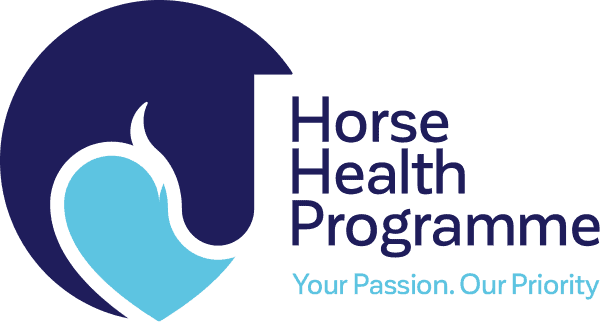Weight management
Our horse is an amazing product of evolution. Over thousands of years they have developed to survive on the sides of mountains with little food pursued by all sorts of predators. This means that they do a little too well when we provide them with a life of luxury, food brought to their door and minimal running requirements unless they are actually a racehorse in training. It’s no surprise that obesity is a massive problem in our horses with around 50% of UK horses being overweight.
How can I tell if my horse is overweight?
Because horse size and shapes vary so much between breeds vets can’t turn around and tell you exactly how heavy your horse ought to be. Instead vets use a body condition score based on fat coverage over the horse’s body.
As a rule of thumb, a horse with an ideal body condition score will have ribs and hip bones that are easy to feel but not obviously visible. In horses with a high body condition score the ribs are hard to find. A crest develops along the top of the horse’s neck and the rear end develops a characteristic “apple shape”. No longer a chunky horse, it’s important that we recognise that these horses are overweight and this is a problem.
Weight tapes, whilst not 100% accurate, can provide a good indication of how your horse’s weight is changing over time.
Why does it matter if my horse is overweight?
Many overweight horses and ponies will appear happy and continue to work at the level we require from them despite being overweight. This doesn’t mean that their weight is not a problem. Overweight horses are at a higher risk of several health conditions. These include; laminitis, reduced exercise tolerance, colic due to lipomas (abnormal fat deposits in the abdomen), arthritis and insulin dysfunction. Some of these conditions may seem like they wouldn’t cause serious problems. However, depending on severity all of them can be life threatening and treatment may require a large amount of money and time.
How can I get my horse to lose weight?
Just like weight management in people there is no magic diet which will suit every horse and enable instant weight loss. Diet changes need to be made gradually. With the aim to feed your horse no more than 1.5% of their body weight in feed and forage daily. For a 300kg pony this works out as 300 x 1.5% = 4.5kg. However, if you are currently feeding much more than this you will need to cut down gradually or you will be met with considerable resistance! Weight loss requires hard work and a complete routine change for you and your horse and if there’s anything horses hate its less food and a change of routine so if you’re struggling do talk to your vet to see if there’s anything we can do to help.
Grazing and Turnout:
Although on the one side we need to limit the amount your horse eats, all horses need to eat regularly in order for their digestive system to function normally so we can’t simply stop them eating grass. What we can do is to limit their access to grass. This makes it more difficult for them to eat as much as they want.
Grazing muzzles can be used to reduce the amount your horse can eat. Fabric muzzles are better tolerated than the hard plastic muzzles. However, it is important to check your horse regularly to ensure the muzzle and horse are still together.
Another key way to reduce the amount of grass your horse has access to is strip grazing. This can be done by using electric tape to reduce the area of field available for your horse to eat from. If possible, using the tape in the centre of the field to make a track around the outside can be better than traditional strip grazing as it encourages your horse to move around more. Like the muzzle you will need to check your horse regularly to ensure the electric tape and horse are where you left them.
Supplementary Feed:
Unless your horse is doing a lot of work they don’t need any supplementary feed. Some un-mollassed chaff can be used to reduce the jealousy when every other horse on the yard gets fed, encourage your horse to come in or to consume any medications you may have to give them. With reduced grass intake your horse may have reduced nutrient intake. There are some balancers designed specifically for horses on a weight loss diet.
Forage:
Giving forage is important to maintain your horse’s normal digestion and reduce gastric ulcers. However, many ponies and horses will inhale their haynet as fast as you can fill it. Using a spring weight scale (these are often designed for weighing suitcases) can help you manage how much forage your horse is getting. Using small hole haynets or putting a second haynet on top of your filled haynet can also slow down your horse meaning the forage will last a little longer.
Horses don’t require high quality forage. For overweight horses haylage is too high in sugar and even normal hay may contain a high level of sugar. Soaking hay overnight can reduce the sugar content. Although you need to ensure you pour away the water somewhere your horse won’t try to drink it!
Exercise:
This is the most important part of a weight loss programme. It’s impossible to lose weight without putting in the effort. Much like the couch to 5k programme for people you need to start the increase in your horse’s exercise gently otherwise it can be overwhelming. Try to do a little work every day, even if it’s just 10 minutes on the lunge. The more work your horse does the easier it will be to keep the weight down.
I’ve done everything! Why isn’t my horse losing any weight?
If you’ve done everything you can think of to help your horse lose weight and they still seem to balloon in size every time a new blade of grass erupts in their paddock then it is worth getting your vet involved to see if there is another reason why your horse isn’t losing weight.
There are a few metabolic conditions which can make weight loss more difficult for our horses. Your vet will examine your horse fully and take blood samples to measure the levels of hormone present in your horse’s blood to rule out these conditions. The main conditions we consider in horses that struggle to lose weight are Equine Metabolic Syndrome (EMS) and Pituitary Pars Intermedia Dysfuction (Cushings). These conditions are covered in more detail in other articles.





